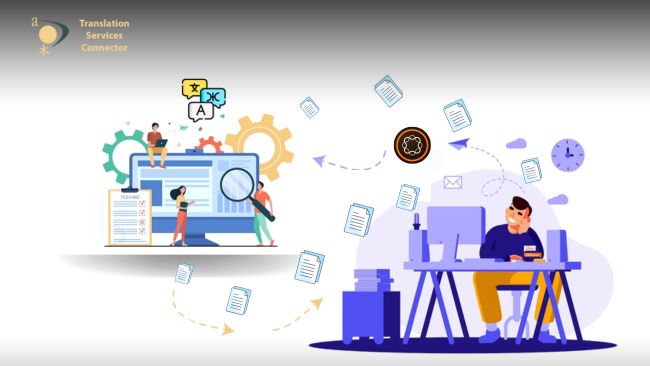Multilingual Sites with AEM and the GPI Translation Connector
The process of adapting a website for different languages and cultures, known as localization, can seem overwhelming. However, by following the appropriate guidelines and utilizing the right tools, the task can be significantly streamlined.
Adobe Experience Manager (AEM) is one of the most popular content management systems that offers a variety of built-in features for creating and managing multilingual content.
This blog covers the recommended methods for adapting AEM-powered websites for different languages and cultures in order to make the localization process as seamless and efficient as possible.
- Plan for localization at the beginning of the project: Localization should be considered early on in the website development process to ensure that all necessary technical and content-related elements are in place for a smooth localization process. By planning for localization from the start, you can avoid any last-minute surprises or delays.
- Use the built-in localization features of AEM: AEM has built-in features for creating and managing multilingual content, such as the translation workbench and localization policies. Utilizing these features can save time and effort when localizing a website. They are designed to make the process of creating, managing, and publishing multilingual content as easy as possible, so be sure to take advantage of them.
- Use a consistent translation memory: A translation memory is a database that stores translations for specific phrases and sentences for your website by language pair. By utilizing the translation memory across all pages, you can ensure consistency and reduce the amount of time needed to translate the site. This also helps to maintain the quality of translations over time, as well as reducing the amount of time and costs associated with translations.
- Use language-specific templates: AEM allows you to create language-specific templates, which can be used to create pages in different languages. This makes it easy to maintain consistency across all language versions of the website. By creating templates that are tailored to specific languages, you can ensure that the layout, design, and structure of the website are consistent across all languages.
- Test the localized website: Once the website has been localized, it’s important to thoroughly test all language versions to ensure that they are working correctly and that all translations are accurate. This step is critical for ensuring that your website provides the best user experience for multilingual audiences.
- Keep an eye on SEO (Search Engine Optimization): Localizing a website also involves ensuring that it is SEO-friendly for all languages. This means that URLs, page titles, meta descriptions, and other SEO elements should be translated and optimized for each language version of the website. This will help to ensure that your website is easily discoverable by users searching in different languages.
- Monitor and maintain the site: Regularly monitoring and maintaining the site, including updating translations and making sure that the website is working correctly in all languages, is essential for maintaining a good user experience for multilingual audiences. This will help to ensure that your website is always up-to-date and provides the best possible experience for your users.
Localizing your AEM-powered website using the GPI Translation Services Connector:
Localizing your AEM-powered website is a crucial step in reaching a global audience. However, the process can be time-consuming and complex.
One way to streamline the process is by using GPI Translation Services Connector for Adobe Experience Manager (AEM).
Here are some of the key benefits of using the GPI Translation Services Connector:
 The GPI Translation Services Connector is a powerful tool that allows you to integrate your AEM-powered website easily with GPI’s translation services. This integration allows you to send content from your AEM website directly to GPI for translation and then receive the translated content back in AEM for immediate publishing. This eliminates the need for manual copy-pasting of content, saving you time and reducing the risk of errors.
The GPI Translation Services Connector is a powerful tool that allows you to integrate your AEM-powered website easily with GPI’s translation services. This integration allows you to send content from your AEM website directly to GPI for translation and then receive the translated content back in AEM for immediate publishing. This eliminates the need for manual copy-pasting of content, saving you time and reducing the risk of errors.- Once you have integrated the GPI Translation Services Connector with your AEM website, you can easily create and manage your localization projects directly from the AEM interface. You can select the pages that need to be translated, assign them to specific languages, and set deadlines for the translation process. The connector also allows you to track the progress of your localization projects and receive notifications when the translations are complete.
- One of the key benefits of using the GPI Translation Services Connector is its ability to handle large volumes of content. The connector can handle thousands of pages and components, ensuring that your entire website is translated quickly and efficiently. Additionally, the connector supports multiple file formats, including HTML, XML, and JSON, making it compatible with a wide range of AEM content types.
- Another advantage of using the GPI Translation Services Connector is the ability to maintain the integrity of your AEM website’s design and layout during the localization process. The connector preserves the structure of your pages and components, ensuring that the translated content fits seamlessly into your website’s design. This is particularly important for websites that use complex layouts and multimedia elements, as copying and pasting translations manually can often result in broken links and distorted images.
- The GPI Translation Services Connector also offers advanced features that can help optimize your localization process. For example, the connector integrates with your company’s translation memory, automating the translation of repetitive content. This can significantly reduce the cost of localization and speed up the translation process. The connector also supports a pure neural machine translation approach or neural machine translation plus post-editing, which can be used to translate large volumes of content quickly.
- In addition, GPI Translation Services Connector offers a high level of security to keep your content safe and protected. The connector encrypts all data in transit and at rest, ensuring that your content is secure during the translation process. This is particularly important for websites that contain sensitive information, such as financial or personal data.
Conclusion:
Expanding a web presence globally can be a challenging task, but with careful planning and the use of Adobe Experience Manager (AEM), it can be made much more manageable and cost-effective. By planning ahead, using a consistent translation memory, creating language-specific templates, testing the localized website, customize SEO for each language, and monitoring and maintaining the site, you can ensure that your website provides the best possible experience for your multilingual audiences.
The GPI Translation Services Connector for Adobe Experience Manager (AEM) allows you to easily integrate your AEM website with GPI’s translation services. With the GPI Translation Services Connector, you can easily create and manage localization projects, track the progress of your projects, and receive notifications when translations are complete. Additionally, GPI Translation Services Connector offers advanced features such as built-in translation memory and machine translation, as well as high-level security to keep your content safe and protected.
References:
